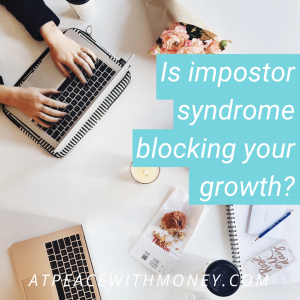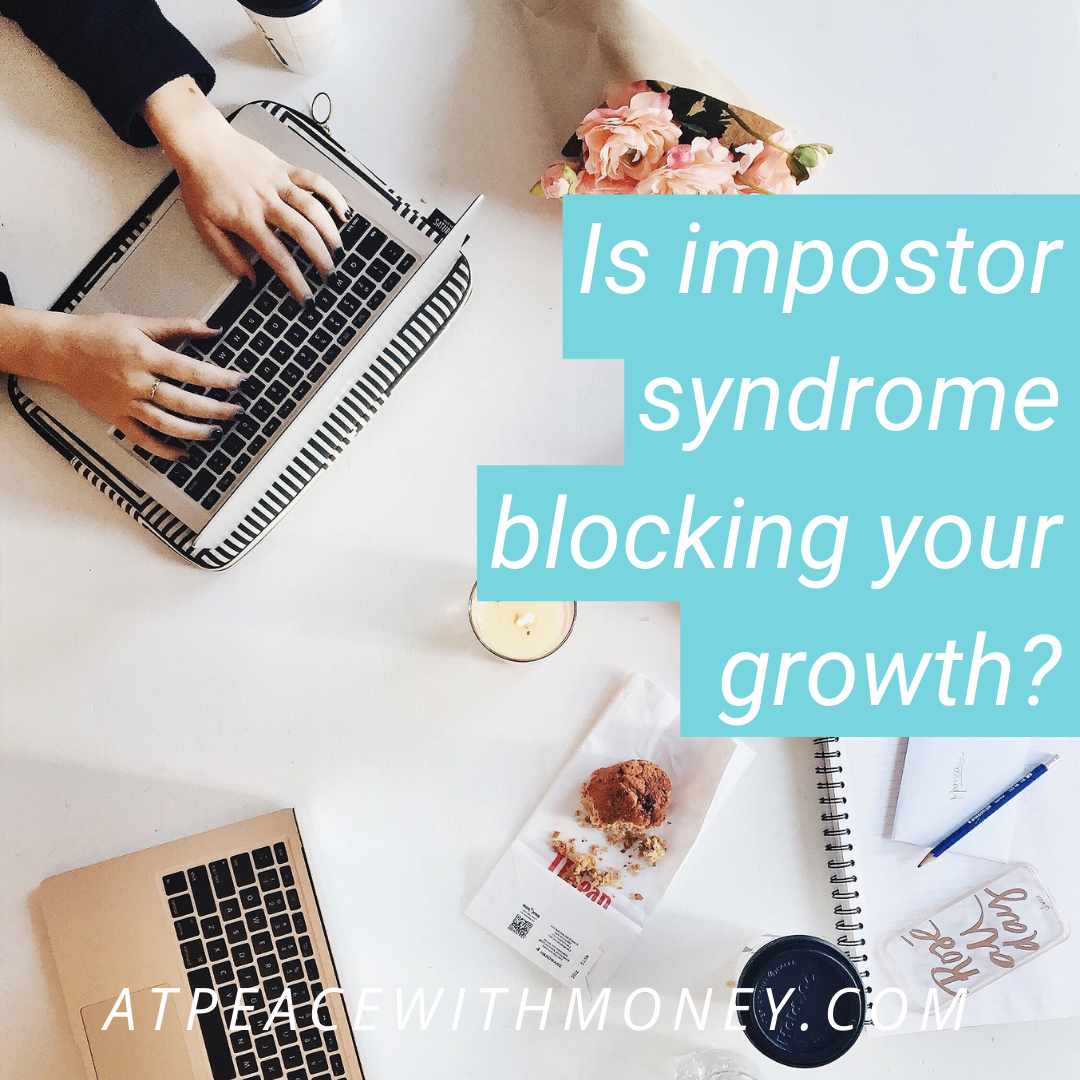Want to Grow Your Business? Check Your Impostor Syndrome First

Financial anxieties hold us back in many ways. Oversaving can prevent us from living our lives fully and meeting our needs. Similarly, impostor syndrome often holds us back from investing in our businesses and developing our experience as business owners.
“What if I’m not _____ enough?”
Out of all the questions impostor syndrome brings out of the shadows, this one is probably at the root of all of them. You might find yourself stalling on getting further education because you don’t feel ready. Perhaps you’re refusing to take the leap and hire an employee or purchase some equipment because you feel like you “can get along well enough without it.”
While this may be true, when we don’t take these steps because we’re internally blocking our own growth, this can have longterm effects on our wellbeing and satisfaction in life. In some cases, doing any of these can make a huge difference to you and your business. Are there places in your business where you’ve been wanting to grow but are holding yourself back mainly because of fear? Are you afraid of success or growth? Take some time to sit with these questions and separate what you truly want but are keeping out of your life based on fear from what actually doesn’t sound fulfilling to you.
Look at Your Numbers
Sometimes having unclear finances can fan the flames of your impostor syndrome. That means the first step is to get clear on where you stand financially, in your business and your personal life. I have a lot of resources for getting started on this process on my blog, but you might like to start with my e-Book, 9 Secrets to Financial Self Care.
Once you’ve got the big picture cleared up, refer to this post from last week, “How Much Should You Invest in Your Business?” which can help you think through how much money is reasonable to spend here. Rather than relying on your feelings about money and your business, let the numbers do the talking. Seeing how much money you actually have available to spend is much more reliable for decision making than listening to your impostor syndrome.
Prioritize Your Why
 Above all else, when faced with a decision around your business, refer back to your money why and your core values. Ask yourself, “Will making this choice bring in more of what I want?” If it’s a yes, even though it might bring up anxieties, you know the way to move forward.
Above all else, when faced with a decision around your business, refer back to your money why and your core values. Ask yourself, “Will making this choice bring in more of what I want?” If it’s a yes, even though it might bring up anxieties, you know the way to move forward.
Happy investing! If you’d like to work through this process with an expert guide, check out my services and set up a Financial Self Care Consultation! I’d love to see if we can work together to help you bust through emotional and financial blocks.
Angela









 I know they say “Leap and the net will appear,” but in order to take care of yourself financially, I think it’s best to take the leap only when you’ve already constructed at least some of that net for yourself. I understand this is difficult territory. It can be hard to know when you might make more money if you’re able to work on your hustle full time, rather than playing it safe and keeping it on the side. My advice is to think carefully and critically and make sure you have the resources to take care of yourself!
I know they say “Leap and the net will appear,” but in order to take care of yourself financially, I think it’s best to take the leap only when you’ve already constructed at least some of that net for yourself. I understand this is difficult territory. It can be hard to know when you might make more money if you’re able to work on your hustle full time, rather than playing it safe and keeping it on the side. My advice is to think carefully and critically and make sure you have the resources to take care of yourself!




 Search for feedback. Listen to your customers to continue innovating and refining your product or service. If you have a team of other people, focus on them to keep things fresh and engaging. Brainstorm together and streamline your business partnerships.
Search for feedback. Listen to your customers to continue innovating and refining your product or service. If you have a team of other people, focus on them to keep things fresh and engaging. Brainstorm together and streamline your business partnerships.